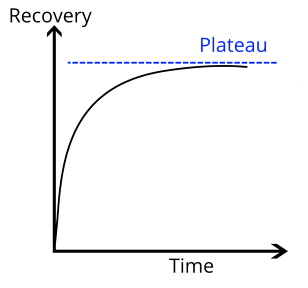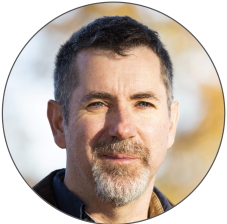How I got 100 extra hours of Rehab
Specific steps I took to get extra, personalized rehab treatment (free) after an injury and made a full recovery.
Previously, I explained how your brain recovers from an injury such as stroke or TBI, and why insurance sometimes doesn't provide enough therapy to make that recovery, then denies additional therapy... because you didn't make progress (what I call the Insurance Catch-22). So, if recovery is possible, but you need more than what insurance typically provides, what can you do?
Here’s what I did.
My Rehab
A year or so ago I had a shoulder problem from too much computer use. (I’ve been creating speech therapy software for over 20 years. All that time on the computer caught up to me.) So off I went to the PT.

She had me do a bunch of exercises to strengthen my shoulder but it was tough to remember the exercises. How high should I rotate my arm, here? I know, you're saying hey, you're overthinking this. If it doesn't hurt you're OK. Well, some of the movements I made caused my tendons to pop. It didn't hurt but when she cringed I knew it was a Bad Thing. And as I did the exercises, she corrected my form quite a bit. If I did those exercises wrong they wouldn’t have the desired effect, or worse, they’d cause further damage.
So, I couldn't remember the exercises and wasn't even following her directions perfectly in therapy. And I'd need over 100 hours of treatment for full recovery. I didn't have an extra $10,000 to spend on having the PT guide me through each of those 100 hours. Also, I'd rather not spend an extra 100 hours driving to and from the PT and sitting in the waiting room.
I'm not complaining. Stroke & TBI survivors have it much worse. Here's why
Why Deliberate Practice is the key to improvement
Just Do It is not as effective as Do It Right
Before I explain my nifty solution, I want to point out why I didn't follow Nike's advice and Just Do It. If I wanted the exercise time to have maximum effect I needed to do the exercises the right way, and not just going through the motions (quite literally in this case). Doing 100 hours of exercises improperly wasn't going to help me much.
In his book So Good They Can’t Ignore You, Dr. Cal Newport studied how people improve significantly at a skill. He demonstrated that exceptional skill is rarely due solely to luck and natural gifts, but due to what’s termed deliberate practice.
Put another way, if you just show up and work hard, you’ll soon hit a performance plateau beyond which you fail to get any better. We all hit plateaus.
Cal Newport, PhD
 Plateaus? Sound familiar? It’s what survivors in speech therapy
run up against all the time, as I
described
previously.
Plateaus? Sound familiar? It’s what survivors in speech therapy
run up against all the time, as I
described
previously.
What Dr. Newport calls Deliberate Practice, would translate, in Rehab, to Treatment. If you have apraxia following a stroke, and can't speak, you don't simply try harder to speak, you consult a speech therapist. The would then provide you with specific exercises for the Apraxia. An excellent example of treatment in speech therapy is the the Rosenbek Hierarchy, which is a very specific treatment protocol which research has shown is effective for Apraxia treatment. The idea behind it is that the patient starts with success (getting as much assistance as needed) then that assistance is gradually reduced as the patient improves.
Don't sacrifice socializing!
Practice is preparation, not replacement, for socializing
 Speech & language treatment should not displace social
interaction: don’t give up enjoyable time with the family to sit in
a room doing drill practice. But don’t expect social interaction, alone,
to improve your speech and language as effectively as treatment. Treatment
can also provide confidence, which makes socializing more relaxing.
Speech & language treatment should not displace social
interaction: don’t give up enjoyable time with the family to sit in
a room doing drill practice. But don’t expect social interaction, alone,
to improve your speech and language as effectively as treatment. Treatment
can also provide confidence, which makes socializing more relaxing.
How I Multiplied PT by 2000%
So….can you guess of how turned my few hours with the PT into 2000% more treatment?
I had her video record me with my phone while she told me how to do the exercises, with feedback just for me, like "how high do I raise my arm? This high."
Viola! I had a personalized training video. So, I had clearer instructions, with feedback included as voiceovers during therapy, and I could just watch it while doing the exercises.
I went in a few more times, for a total of about 4 or 5 hours of PT. And those videos let me turn that into over 100 hours of practice.
At this point you’re probably thinking: That’s great. But this blog is for speech & language rehab. How do you apply it there?
How to multiply your speech & language therapy
It is harder to apply this to speech therapy. Speech & language are much more complicated and interactive. You need feedback to know if you're doing it right. Here's what you can do:
- Consult your speech therapist.
Let them know that you're willing to work hard at home and ask for exercises to work on. They'll be thrilled to know you're multiplying their efforts (as I did). They may even be more willing to "to to bat" for you with the insurance company to extend treatment. - Practice at home
Your speech therapist can probably provide some home practice activities. And I’ll share more with you in upcoming articles, including :- Free, printable worksheets for all of the major defect areas (speech, reading, writing, word-retrieval, auditory comprehension, etc.)
- Exercises you can do with post it notes
- Where to get inexpensive speech therapy
Don't miss out on the above : If you're not already subscribed to the free Rehab Resources newsletter, you can get these free therapy tips by email
-
Start now!
If you can't wait for the tips I'll be sending, you can also try the speech therapy software I work on, free: Try the classic Bungalow PC software for speech therapy or, if you have an iPad or Android, or Mac you use our web app, MoreSpeech.com.
Have you done independent home practice for speech & language
therapy?
Share your recovery story below
Every day is an opportunity for recovery. Don't miss a single day.
- Surprising neuroscience discovery that makes recovery possible at any age.
- Why embracing failure leads to faster recovery.
- Unlock your survivor's communication needs in 4 steps.
- How to improve speech & language at the kitchen table.
Clay Nichols
Co-founder of
MoreSpeech and
Bungalow Software
for unlimited speech therapy at home and in the clinic.
 For
3 decades, Clay has helped patients, caregivers and speech pathologists
with speech & language software. He is not a speech-language
pathologist.
For
3 decades, Clay has helped patients, caregivers and speech pathologists
with speech & language software. He is not a speech-language
pathologist.
© 2025 Bungalow Software